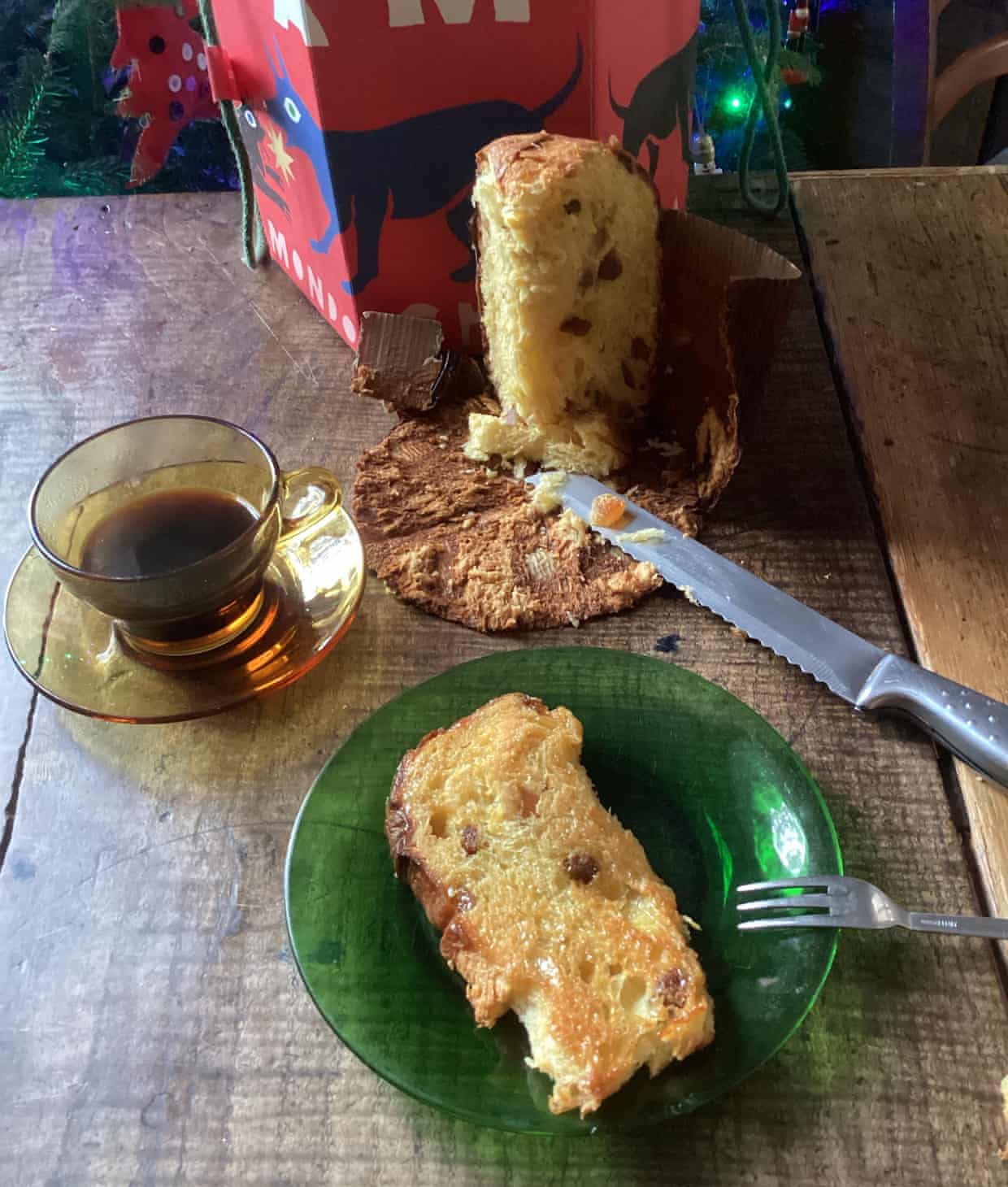Soft and sweet, this festive bread is the Christmas treat that keeps on giving, so long as you know how to fashion the leftovers into ongoing treats …
The story of panettone is not dissimilar to the making of it: a sequence of historical fragments, legends, wordplay, propaganda and innovation kneaded together so thoroughly that it’s difficult to separate things out. Scholars and food historians such as Massimo Montanari and Stanislao Porzio recognise truth in all the parts that make up the whole, among them: the ancient Roman habit of sweetening bread with honey; il rito del ceppo, or the ritual burning of a decorated log at Christmas; a fortuitous mistake of adding yeast to cake by a young chef to the Sforza family, Toni, which resulted in pan di Toni (and then panettone); a 1559 Milanese recipe for yeasted bread with eggs, sugar, butter and fruit; and a dictionary entry in 1606 that defined panaton as a large bread made for Christmas.
Longoni studied history before he took over his father’s bakery in 2002, so he loves all the historical shifting. Sitting in the kitchen of his lab, he takes me through the evolution of panettone with the enthusiasm of a child let loose in a bakery. By the 1800s, panettone really was Milan’s festive bread. And in the 1900s it would become the festive bread of many. This was due largely to an entrepreneurial pastry chef called Angelo Motta, who took traditional artisanal panettone and developed it, making the texture softer and introducing a supportive paper that gave it a cylindrical base, height and a great dome. The opening of the Motta factory in 1935 saw the industrialisation of panettone production; the arrival of strong white flour changed its nature further, while advertising and distribution ensured its expansion throughout Italy and beyond.
Longoni grew up in the 1970s around his father’s bakery – though it didn’t make panettone back then – so he knew the Motta brand, which he talks about affectionately and objectively. He also grew to understand the effects of the industrialisation on food, particularly bread, in cities. When he finally took over the bakery, his mission was clear: to take bread both backwards and forwards, using great raw materials and traditional methods. Panettone was an ideal teacher, because even in industry, the use of lievito madre has never been lost. Only mother dough and butter preserve and maintain the dough’s softness, so that, when pulled, panettone peels away in long pieces.
Watching panettoni in a rotating oven is calming. Watching its removal, though, is nerve-racking – even I can see their domes sinking. The bakers move fast, clamping batches of eight between rods so they can be inverted, at which point the domes relax down like rounded bellies and hang that way as they cool. Back at the table, we peel strips from slices of panettone. Given that it has a life of 60 days (and is helped by a plastic sack), there is no rush and no such thing as leftover panettone – just delight for weeks. Simply warm it briefly in the oven – at about 160C (140C fan)/325F/gas 3 – for a few minutes, then butter it. Or try melting a little butter and honey in pan until it bubbles gently, then fry a slice of panettone until lightly golden – a fabulous January pudding with ice-cream. Davide also suggests making a prosciutto and cheese sandwich, warming it in the oven and finishing it in a dry frying pan, which I can confirm is divine. And don’t forget to save a slice for 3 February, which celebrates San Biagio, patron saint of the throat and protector against colds. Panettone as prevention! Cheers to that.
